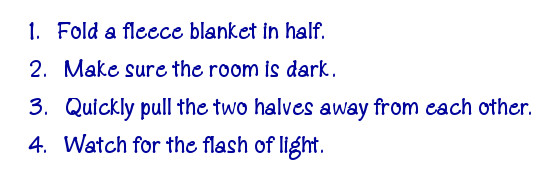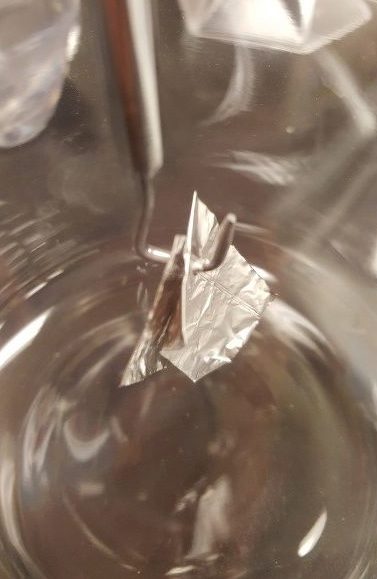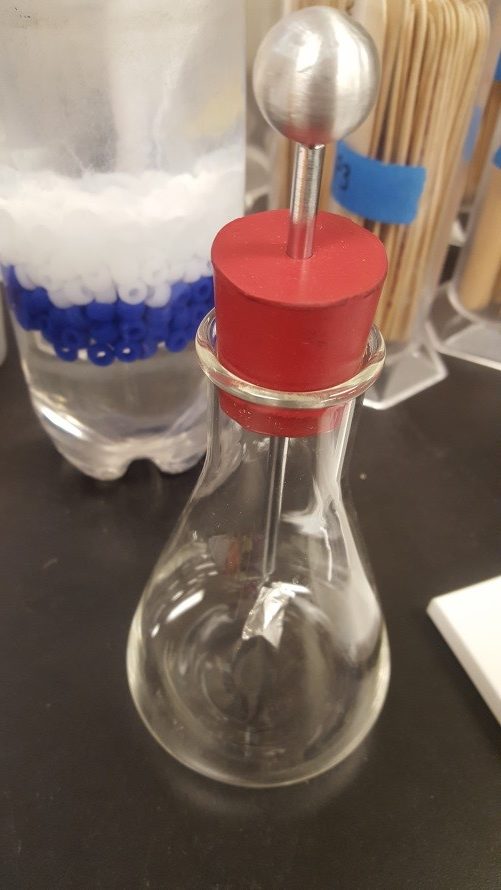 by Nancy Foote
by Nancy Foote
The latest addition to my classroom’s Curiosity Table is a Static Electricity Electroscope. The fact that it looks a bit odd made it even more intriguing to my students. Once they began to play with the electroscope, they couldn’t stop.
What on Earth??
Without information, my students struggled to figure out what this strange object did. (I should point out that we have not discussed electricity yet; that comes later in the school year.) I was interested to see what they would do with the electroscope. They certainly were curious… and stumped. Finally someone took a picture and Googled the image.
As soon as they realized it was related to static electricity, they grabbed balloons, inflated them, rubbed them on their hair, and got down to work. The oohhs and aaahhs turned into squeals of delight as they saw the foil leaves repel each other when they had like charges. To have a visual confirmation of what they intuitively knew was fascinating.
They tried dragging their feet across the carpet to build up static charge, but the results were not as pronounced. A student did a bit of research and determined that it was because our classroom was too humid.
Too Much Fun to Leave at School!
Another student asked if she could take the electroscope home. I agreed. I was shocked and delighted when she brought it back and told me of an unexpected use that she discovered.
 “When you stop at the gas station,” she explained, “they have a warning on the pump to not get back in your car because static electricity can build up.” She is right. I’ve seen that warning sticker hundreds of times, but it has become invisible to me.
“When you stop at the gas station,” she explained, “they have a warning on the pump to not get back in your car because static electricity can build up.” She is right. I’ve seen that warning sticker hundreds of times, but it has become invisible to me.
She continued, “I decided to use this as a tester, to see if static really did build up.” She ran an amazingly accurate experiment of sliding in and out of the family car. (She did this at home, not at the gas station—whew!)
“It depends on what you wear,” she announced. “Some clothes conduct static better than others.” I could have told her that, but it was significantly more powerful for her to discover it herself. “Also,” she concluded, “I’m hypothesizing that humidity matters. In our dry, hot summer, there’s probably more static build-up.”
Living in the Arizona desert, our worldview is different. I grew up in Chicago, where static was worse in the winter. (It was easy to torture my sister by shocking her in the dry, cold Chicago air.) My ambitious student wants to test whether the type of shoes she wears impacts the amount of static build-up produced. She will get her chance soon… once it’s her turn to take the electroscope home again.
The Investigations Continue…
I soon had a sign-up sheet so that others could take the Static Electricity Electroscope home to try out their own experiments. Next up was a student who knew how to make lightning. Here are his instructions, in case you’re curious:
 He wanted to figure out more about lightning and static electricity.
He wanted to figure out more about lightning and static electricity.

If a static charge is nearby, the two foil leaves will repel away from each other. The stronger the charge, the more the leaves will separate.
He used different types of blankets, but ultimately found that fleece blankets worked best to generate the light flash. “It was really hard to get the electroscope in the right place at the right time,” he remarked. A suggestion from his younger sister made his investigation easier. He compared the intensity of the flash to how vigorously the electroscope’s foil leafs moved before the light flash.
He made a data table, rating the flashes and the movement of the foil leafs with a score of 0 (no flash, no movement) to 10 (large flash, large movement). “They do correlate, but it might not be a causal relationship.” Seriously?! This kid is in the eighth grade. True, we have spent a lot of time discussing the idea that correlation doesn’t mean causation, but until he spoke, I wasn’t positive they were getting the concept. Apparently they do!
While his investigation wasn’t perfect, it’s important to note that the student determined a way to test what he was interested in.
Even now, the list of students who want to take the electroscope home is growing, not shrinking. I’m surprised and delighted to see how much they are learning from this one item on the Curiosity Table.
If you don’t have a Curiosity Table, you should. Start small—you just need part of a table. The students will not be able to keep their hands off the materials you place there. And no matter how much science you try to teach them, they will learn more than you ever thought possible if you let them explore and play with your Curiosity Table goodies.
Thanks, Educational Innovations, for this amazing tool.
Nancy Foote is a middle school physics teacher in Arizona. She is a recipient of the Presidential Award for Excellence in Mathematics and Science Teaching, as well as an Arizona master teacher. Nancy’s YouTube channel can be found at www.YouTube.com/nancyfootehigley.

